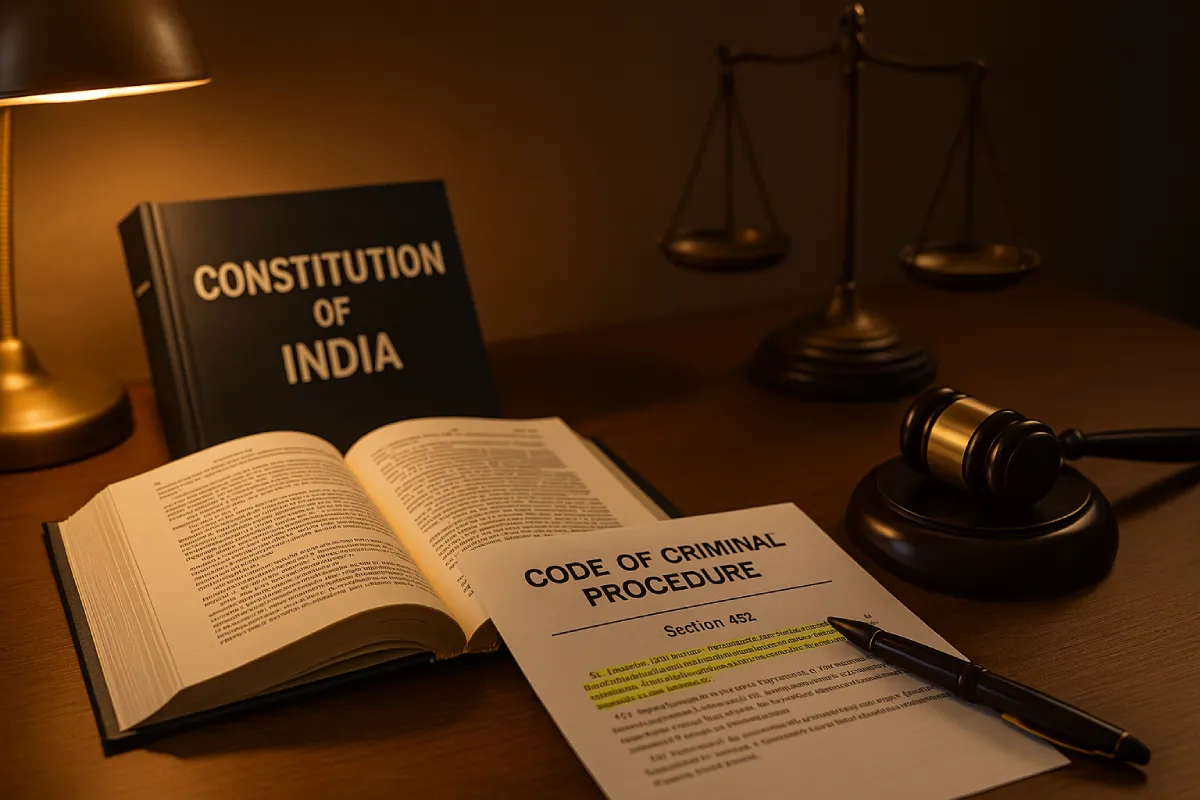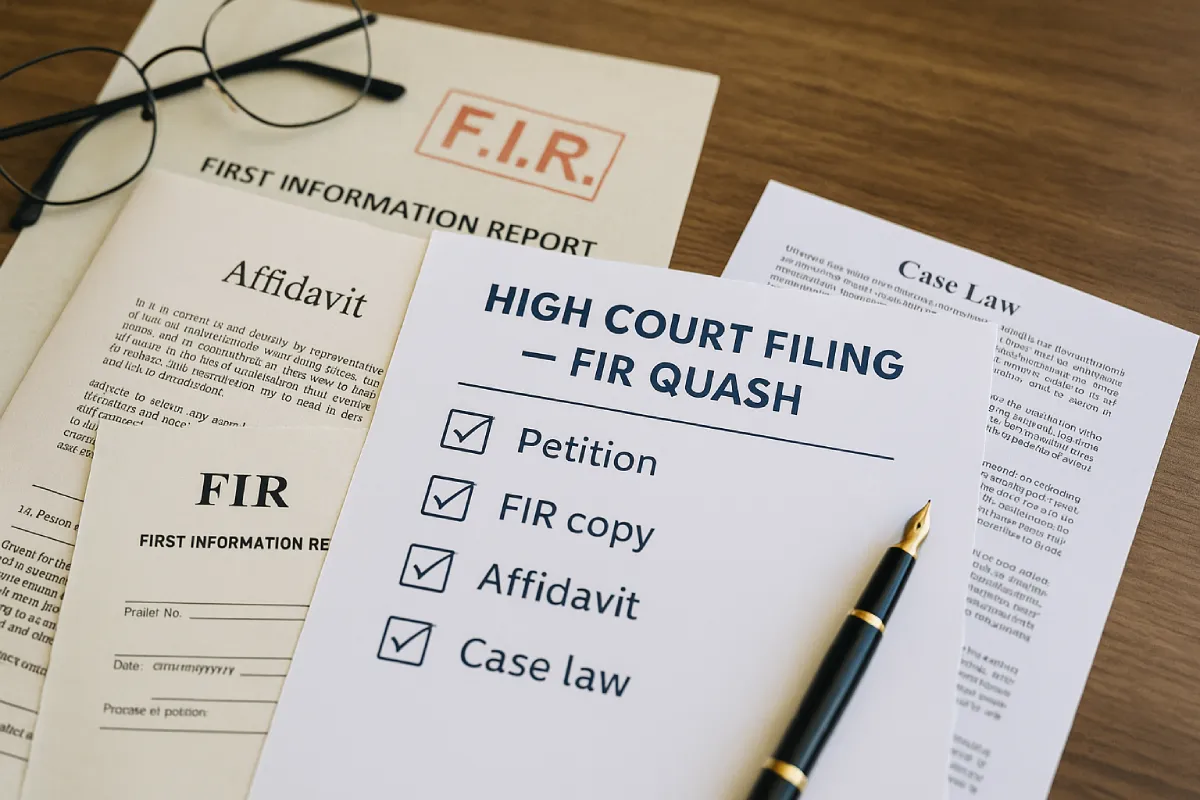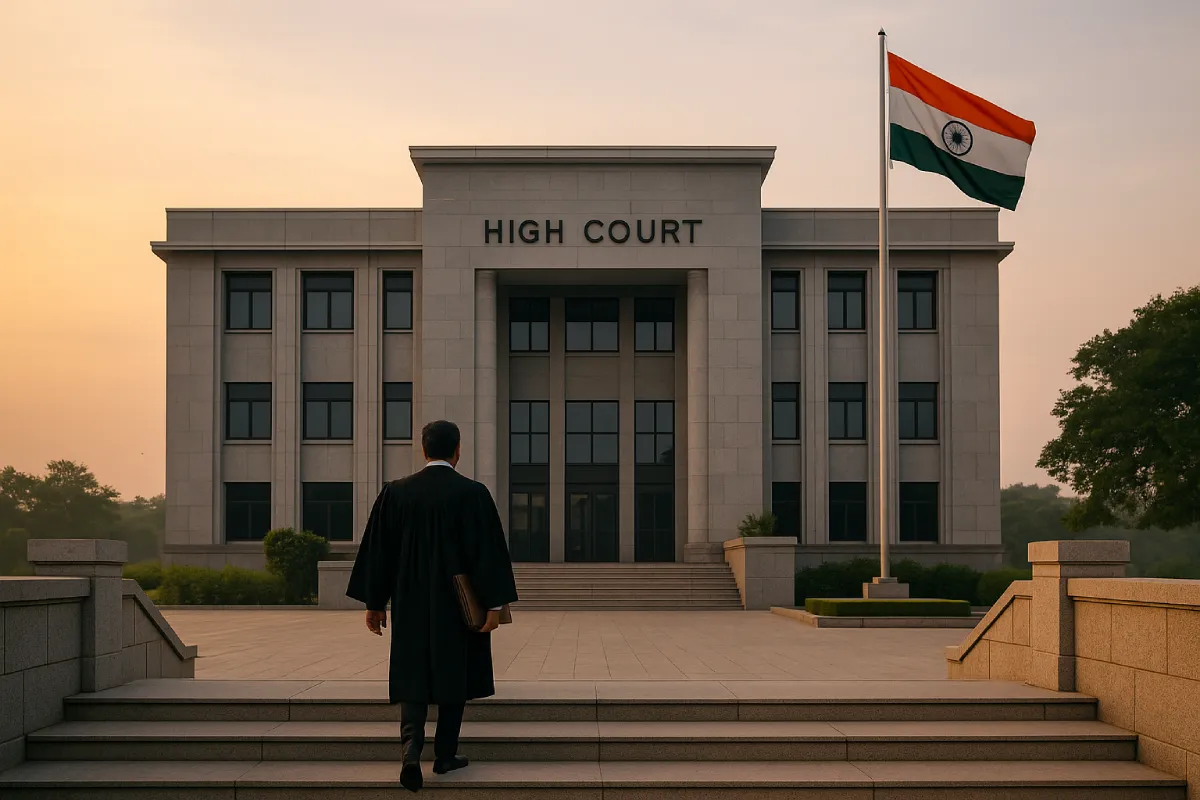Grounds for Quashing of FIR: Complete Legal Guide
Grounds for quashing of FIR protect innocent parties from baseless prosecution. This guide explains every recognised ground, the statutory framework, key judgments, and the initial steps to safeguard your rights.
Filing of a First Information Report (FIR) is the gateway to criminal prosecution, yet not every FIR deserves to mature into a trial. Grounds for quashing of FIR arise when the complaint is legally untenable, malicious, or amounts to an abuse of process. Under Section 482 of the Code of Criminal Procedure, 1973, and Articles 226/227 of the Constitution, High Courts wield inherent powers to quash FIRs to secure justice and prevent miscarriage of law.
Why Grounds Matter
Identifying the correct ground is critical. Courts will not consider vague pleas; they require a specific legal basis supported by precedent. Choosing the right ground can save years of litigation and unnecessary hardship.
Statutory Basis & Judicial Discretion

Section 482 CrPC is the statutory anchor, while Article 226 empowers constitutional review. Courts exercise this power sparingly, guided by principles laid down in Bhajan Lal and subsequent Supreme Court jurisprudence.
- Section 482 CrPC: Inherent power to prevent abuse of process and secure ends of justice.
- Article 226/227 Constitution: Writ jurisdiction to safeguard fundamental rights and supervise subordinate courts.
- Key Test – Bhajan Lal Seven‑Point Checklist: The Supreme Court in State of Haryana v. Bhajan Lal (AIR 1992 SC 604) catalogued seven illustrative categories where quashing is permissible.
Exhaustive Grounds for Quashing of FIR

The sections below break down each recognised ground, pairing a clear explanation with its legal basis, real‑world example, and a quick action tip so you can apply it immediately.
1. Absence of Prima Facie Offence
If the FIR, taken at face value, does not satisfy every statutory ingredient of the alleged crime, the case has no legs and the High Court can terminate it at the threshold.
- How it works: Under Section 482 CrPC and Article 226, the judge cross‑checks FIR allegations against the bare‑act elements. A single missing element = no offence = instant relief.
- Key authority: R.P. Kapur v. State of Punjab (AIR 1960 SC 866).
- Example situation: Tenant accuses landlord of “criminal breach of trust” merely for adjusting the security deposit, no dishonest intention is even alleged, so no offence disclosed.
- Action tip: Highlight statutory ingredients in one column and corresponding FIR allegations in another; wherever blank, you win.
2. False, Vexatious or Malicious Allegations
FIRs filed to settle personal scores or extort concessions waste judicial time. Courts quash them to deter legal harassment.
- How it works: You prove the ulterior motive through emails, WhatsApp chats, or prior civil suits. The court sees the pattern and applies its inherent power.
- Key authority: Pepsi Foods Ltd. v. Special Judicial Magistrate (1998 5 SCC 749).
- Example situation: Ex‑business partner lodges an FIR days after receiving an unfavourable arbitration notice clear retaliatory intent.
- Action tip: Attach documentary evidence showing chronology and mala fide intent; the timeline is your best friend.
3. Civil Dispute Dressed as Criminal
Commercial, contractual, or property disputes are often given a criminal colour to pressure the opposite party courts readily quash such FIRs.
- How it works: Demonstrate the dispute’s purely civil nature (e.g., breach of contract) and absence of criminal intent.
- Key authority: G. Sagar Suri v. State of UP (2000 2 SCC 636).
- Example situation: Supplier sues for cheque bounce and lodges FIR for cheating over the same invoice civil remedy already exists.
- Action tip: File photocopies of pending civil proceedings to show duplicative litigation.
4. Settlement / Compromise Between Parties
When disputing parties genuinely patch things up, continuing criminal prosecution serves no purpose; High Courts can quash even certain non‑compoundable offences.
- How it works: Submit a joint compromise memo and affidavits. The court applies the Gian Singh test, nature of offence vs. societal impact.
- Key authorities: Gian Singh v. State of Punjab (2012 10 SCC 303); Narinder Singh (2014 6 SCC 466).
- Example situation: Matrimonial cruelty FIR withdrawn after mediated settlement; couple reunited.
- Action tip: Mediation agreement + both parties’ affidavits = powerful evidence for quashing.
5. Jurisdictional Error
An FIR registered by a police station lacking territorial or subject‑matter jurisdiction is legally unsustainable.
- How it works: Point to place‑of‑occurrence records and Section 177 CrPC to show the alleged offence occurred elsewhere.
- Key authority: Sajjan Kumar v. CBI (2010 9 SCC 368).
- Example situation: Cyber‑fraud allegedly executed in Bangalore but FIR lodged in Delhi without any nexus.
- Action tip: Produce IP logs, invoices, or GPS data pinpointing location outside the complainant police station’s limits.
6. Legal Bar / Statutory Immunity
Some statutes demand prior sanction or impose limitation periods; ignoring these bars voids the FIR.
- How it works: Cite the special Act (e.g., Companies Act § 197) requiring Central Government sanction or Limitation Act provisions.
- Key authority: State of HP v. Tulsi Ram (AIR 1977 SC 1575).
- Example situation: Company director booked for technical non‑compliance without mandatory ROC sanction.
- Action tip: Attach official correspondence showing absence/refusal of sanction to demonstrate legal bar.
7. Double Jeopardy & Previous Adjudication
You can’t be tried twice for the same offence; Article 20(2) of the Constitution shields you from repetitive prosecutions.
- How it works: Furnish certified copies of the previous acquittal/conviction to establish that the matter is res judicata.
- Key statute: Article 20(2) Constitution; Section 300 CrPC.
- Example situation: Same assault incident spawns a fresh FIR after earlier acquittal.
- Action tip: A simple certified judgment often seals the deal no second innings for the prosecution.
8. Delay & Procedural Irregularities
Unexplained, inordinate delay in filing the FIR can indicate concoction, inviting quashing.
- How it works: Argue prejudice to defence and loss of evidence; rely on timeline analysis.
- Key authority: T.T. Antony v. State of Kerala (2001 6 SCC 181).
- Example situation: FIR for workplace dispute filed three years after alleged incident with no justification.
- Action tip: Prepare a chronological chart juxtaposing the date of the event vs. the FIR registration date.
9. Lack of Mens Rea or Essential Ingredients
Some offences require a guilty mind; if the FIR omits intent, courts won’t allow a fishing expedition.
- How it works: Highlight statutory language demanding intent (e.g., Section 420 IPC). The absence of words like “dishonestly” or “fraudulently” is fatal.
- Key authority: Sharat Babu Digumarti v. State (NCT of Delhi) (2017 2 SCC 18).
- Example situation: FIR alleges data entry error yet accuses staff of cheating—no dishonest intention pleaded.
- Action tip: Use a side‑by‑side table showing the missing mental‑state ingredient.
10. Abuse of Process / Collateral Purpose
Courts crush FIRs filed to arm‑twist someone into a civil settlement or recovery.
- How it works: Reveal parallel civil recovery attempts and the sequence of events indicating coercion.
- Key authority: Zandu Pharma v. Mohd. Sharaful Haque (2005 1 SCC 122).
- Example situation: Builder files FIR against home‑buyer for criminal intimidation immediately after buyer seeks refund.
- Action tip: Attach civil notices, emails demanding money, and show-cause letters to prove collateral motive.
11. Unnamed or Unknown Accused
When identity is uncertain or a compromise reached with the known accused, continuing against “unknowns” is futile.
- How it works: Demonstrate an investigative dead‑end or filed compromise deed; the Court may quash the entire FIR.
- Key authority: State of M.P. v. Laxmi Narayan (2019 5 SCC 688).
- Example situation: Complainant identifies the actual perpetrator later and forgives; the unknown co‑accused remains speculative.
- Action tip: Get the complainant’s affidavit not objecting to quashing against unnamed persons.
12. Constitutional Violations
FIRs that muzzle free speech, profession, or other fundamental rights attract writ quashing.
- How it works: Argue disproportionate restriction under Article 19; the court weighs public interest vs. personal liberty.
- Key authority: Arup Bhuyan v. State of Assam (2011 3 SCC 377).
- Example situation: Journalist booked for sedition over legitimate criticism violation of free speech.
- Action tip: Combine Section 482 petition with writ plea for stronger relief.
Quick Checklist Before You Move High Court

31‑word summary: Preparing a quash petition requires precision. Use this checklist to ensure you cover every procedural requirement before filing under Section 482 CrPC.
- Copy of registered FIR and certified documents
- Affidavit explaining factual background and selected grounds
- Evidence supporting compromise or absence of offence
- Case‑law synopsis and list of dates/events
- Vakalatnama & court fee as per High Court rules
Brief Guide: How to Quash an FIR
33‑word summary: For a step‑by‑step roadmap including drafting tips, hearing strategy, and post‑order compliance, read our dedicated article, How to Quash an FIR in India.
People Also Ask (PAA) Highlights
- What does it mean to quash an FIR?
- Which High Court has jurisdiction to quash an FIR?
- Can non‑compoundable offences be quashed?
- How long does an FIR quashing petition take?
Key Takeaways
- Section 482 CrPC empowers High Courts to quash FIRs to prevent abuse of process.
- Courts rely on Bhajan Lal principles to evaluate petitions.
- Twelve practical grounds, from prima facie gaps to constitutional breaches, cover most scenarios.
- Early evidence gathering and strategic drafting dramatically boost success rates.
Frequently Asked Questions
Is quashing an FIR the same as withdrawing it?
Withdrawal is initiated by the complainant; quashing is a judicial act by the High Court under Section 482 CrPC that nullifies the FIR for legal defects or abuses of process.
Can economic offences be quashed after settlement?
Generally, yes if the offence is predominantly civil, and the compromise is genuine (Narinder Singh, 2014). Courts still weigh public interest.
Does filing a quash petition stop an arrest?
Not automatically. Seek anticipatory bail alongside, or request interim protection when your petition is first listed.
What documents strengthen a quashing petition?
Certified FIR copy, evidentiary documents disproving allegations, compromise deeds, and a clear chronology of events lend persuasive weight.
Conclusion
Quashing an FIR preserves personal liberty where prosecution is unwarranted. Assess your case against the recognised grounds and act swiftly. Courts favour well‑prepared petitions rooted in precedent.
Need Legal Assistance?
Facing a dubious FIR? Prashastha Legal can evaluate your case, draft a precise quash petition, and represent you before the High Court. Contact our Criminal Law Team or explore related services in Divorce Law and Property Law.
Disclaimer: This article is for informational purposes only and does not constitute legal advice.








